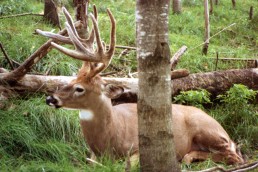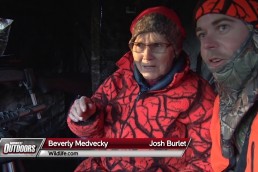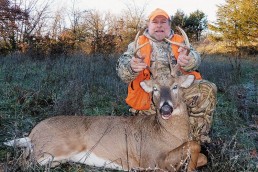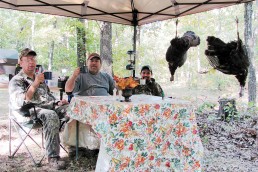Things to Think about Before Hunting Deer This Fall
SHARE THIS POST
If you hunt in a forest region, there are 15 or more whitetails per square mile living in your hunting area (unless you’re in Minnesota’s Arrowhead Region where wolves keep numbers significantly lower). After corn is harvested in farming areas, numbers can be twice as high in remaining habitat suitable to whitetails (not necessarily to hunters) and posted lands.
Roughly 60 percent of those deer are antlerless—mature does, yearling does and fawns. The rest are antlered bucks ranging from yearlings to trophy-class, 4 1/2- to 6 1/2-year-olds. If you could somehow make all the trees, shrubs and “deer-height” plants suddenly disappear, you’d be astonished by how many deer you’d see. Isn’t it amazing then, that a hunter can spend an entire day or two walking through a square-mile of deer country without seeing a single mature buck or any other deer?
Maybe walking through an entire mile in a day with a rifle, shotgun or bow in hand, still-hunting or making a drive, is a mistake. Sure, hunters take deer while hunting in either manner, but rarely mature bucks and not many mature does.
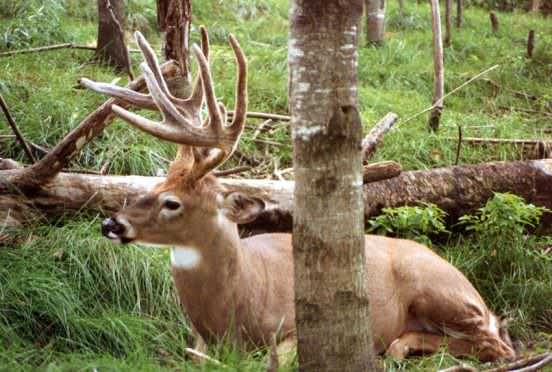
Moreover, by the end of the first or second day of such hunting most if not all of surviving deer in that square-mile will be gone, having abandoned their home ranges, or they seem to be gone, having become nocturnal.
Today’s mature whitetails, especially the older bucks, are generally too alert, too wary and too skilled to be discovered standing still or moving slowly within easy shooting range by hunters moving about on foot. For that matter, eight or more of all unseen deer are unknowingly passed within easy shooting range per mile by traveling hunters on foot. If and when one is spotted, it is typically bounding noisily away at top speed through dense intervening cover—an extremely difficult target for any one-weekend-per-year whitetail hunter.
Maybe you are a stand-hunter, but like most stand-hunters these days, your hunting hasn’t been particularly spectacular either. The likely reason is you’ve been keeping things simple by using one stand day after day and year after year at a site selected for no particular reason other than it has a great field view or its easy or familiar access.
Chances are, you’ve also been using a noisy ATV to get to your stand site—all the rage these days—thus alerting whitetails in the vicinity a human hunter is coming, polluting your clothing, boots and body with ATV oil and gas fumes, aiding in informing whitetails when and where you’ve arrived, creating an obvious tire trail certain to be followed by other hunters using ATVs.
Frustrated by a lack of success, you’ve probably also been using hunting aids claimed to make it possible to take bucks with enormous antlers—noisy, unwieldy-to-tote, installed treestands that emit unusual odors or various lure scents, cover scents, scent-blockers, scent-killers (unusual odors of their own), calls, rattling antlers (while inexperienced in with what sounds are supposed to sound like or not knowing when or how often to use them) and/or bait and or a mechanical feeder or a food (bait) plot.
After being annually bombarded by the carnival-like sights, sounds and odors characteristic of hunters using these products the past three decades, it is becoming increasing difficult to take or lure whitetails that have survived two or more hunting seasons to stand sites by such means. Within the first minutes or hours of each new hunting season, most mature whitetails have already discovered and identified the same old stand-hunters using the same old hunting aids at same old stand sites, after which, they live fairly normal lives safe distances away.
With the great variety of so-called “odor-eliminating” products on sporting goods shelves these days, many hunters are now also convinced they can no longer be smelled by downwind whitetails. If you believe this, just take a whiff of a hunting partner’s breath, your own rubber boot soles, anything leather you carry or your firearm. Then, a day or two after returning home (after your nose is no longer accustomed to ignoring your own odors), take a whiff of the clothing, your gun and the boots you wore. This will be an eye-opener, making it obvious why it is best to be downwind or crosswind of sites or trails where you expect to see deer—a simple precaution that costs nothing. Nonetheless, because mature whitetails generally react with less concern upon scenting upwind hunters who are relatively scent free, you should continue to attempt to remain as scent-free as possible.
Many hunters believe they are safe from being smelled by deer while in a treestand well above the ground. Back in the ‘70s and ‘80s, after exhaustively releasing various odors characteristic of deer hunters from sealed containers into the air from heights of up to 55 feet upwind of whitetails (and black bears) complacently passing or feeding various distances away, I was able to prove a multitude of human odors actually spread vertically downwind as well as horizontally, soon touching the ground and spreading throughout an ever-widening, pie-shaped area up to 400 yards wide and 200 yards downwind. Though you may consider odors eliminated when undetectable by your own nose, keep in mind, whitetail’s noses are more than 10,000 times more sensitive than a human nose. A lot of what we can’t smell, whitetails can.
Admittedly, inexperienced fawns and yearlings not accompanied by well-experienced mothers do not always react wisely upon detecting airborne odors emitted by treestand hunters, commonly ignoring them if they can’t see or hear the hunters (like most whitetails did 30-some years ago). They sometimes even become so overwhelmed with curiosity upon detecting such odors, making them considerably more vulnerable to stand-hunting than the older deer.
Are you enjoying this post?
You can be among the first to get the latest info on where to go, what to use and how to use it!
Can anything actually be done to eliminate or minimize the above problems?
Sure.
First of all, stand-hunt only. If all hunters in your hunting area are non-aggressive stand-hunters, most or all of your deer will remain within their home ranges throughout much if not all of a hunting season. This alone will greatly improve your ability to take mature whitetails.
Then, also move to a new, unused stand site 100 yards or more away every day or half-day. Sooner or later, even the most wary big bucks that have not as of yet located you one morning or afternoon will unknowingly wander into easy shooting range.
Most important of all, always sit well hidden in a tree or on the ground within easy shooting distance downwind or crosswind of very fresh tracks made by unalarmed deer—close-together tracks of walking or feeding deer, never widely separated tracks of trotting or bounding deer. Fresh tracks reveal locations of sites and trails being used by whitetails right now, today or likely to be used later, today or early tomorrow morning (if not alarmed by a hunter there in the meantime). Don’t count on seeing deer near any stand site after more than two successive half-days of stand-hunting. Whitetails typically use only about 10 percent of their home ranges daily, and this 10 percent commonly changes daily during a hunting season for several reasons. Keying on fresh tracks is the only way I know of that can keep you close to deer every day or half-day of a hunt.
Also, whether walking to or from a stand site or searching for fresh deer tracks, always walk non-stop, keeping your head pointed straight ahead with eyes constantly searching for fresh tracks, your next places to hunt. You will thus avoid displaying ruinous hunting behavior: sneaking and halting often to peer about and listen, which is alarming to seen or unseen deer and likely to cause them to quickly abandon the area four or more days with or without your knowledge.
If a big buck is your intended quarry, key on very fresh tracks 3 1/2 inches in length or longer, not including impressions made by dewclaws. No does of any age or yearling bucks make tracks this large; only bucks 2 1/2 years of age or older do. Switch to a new stand site near such tracks once or twice daily.
Forget wide fields of view and easy access. Older bucks wisely avoid areas with wide fields of view (and bait) during daylight hours of the hunting seasons. They are most apt to be seen moving early or late in the day in or adjacent to feeding areas, especially where does feed, whether in heat or not where cover makes it difficult to see deer more than 50 yards away. Where access is difficult or where other hunters are not inclined to hunt, or can’t—forested swamps or bogs, large expanses of dense brush or wooded private lands (with permission)—your odds of taking a big buck will be even greater.
Keep in mind, whitetail hunting is an imperfect sport; the best tactics do not always work. To be successful, never quit doing things that yield the best odds for success, like the aforementioned tactics. Be patient and as still and as silent as possible four or more hours during each half-day of hunting. Throughout the typically boring hours of stand-hunting, keep reminding yourself what you are doing is today’s most productive way to hunt mature bucks and other deer. It only has to work once per hunting season to make you a regularly successful hunter.
Dr. Ken Nordberg has written more than 700 magazine articles and 12 books on the habits and hunting of whitetails and black bears, including the “Whitetail Hunters Almanac” series. He also produced “Doc’s Buck and Bear Hunting School” videos. His encyclopedic website is at drnordbergondeerhunting.com.
MWO
SHARE THIS POST
Did you enjoy this post?
You can be among the first to get the latest info on where to go, what to use and how to use it!
